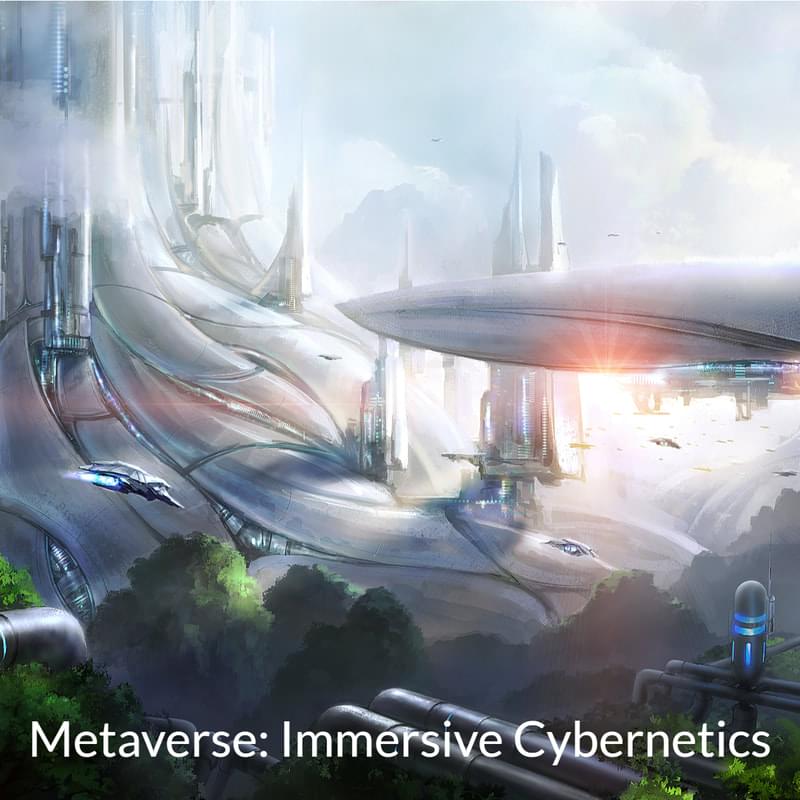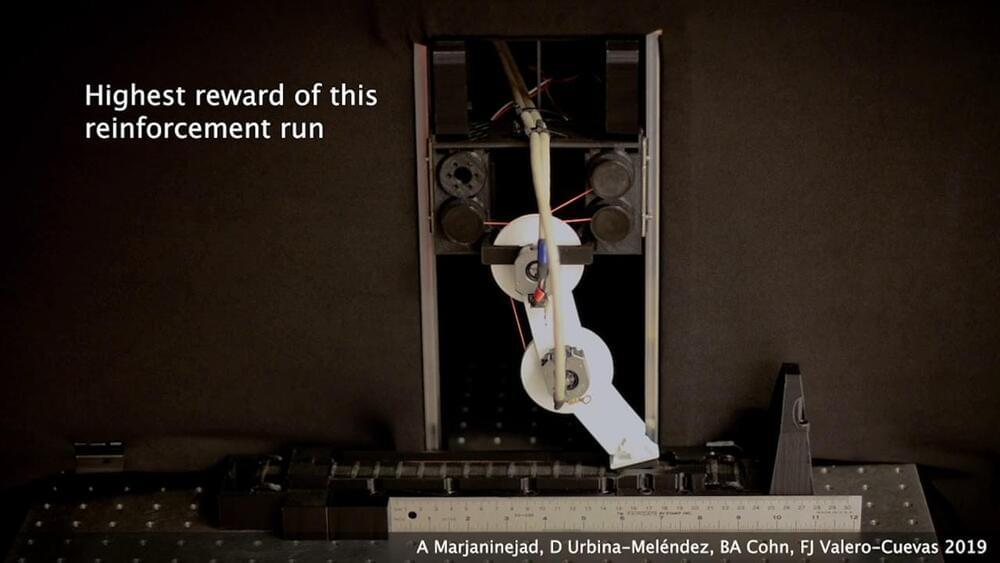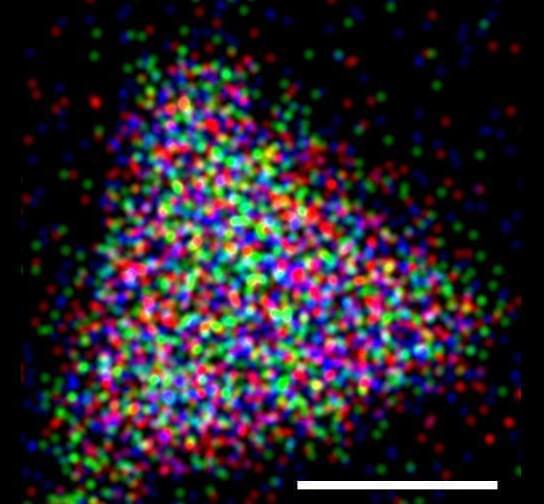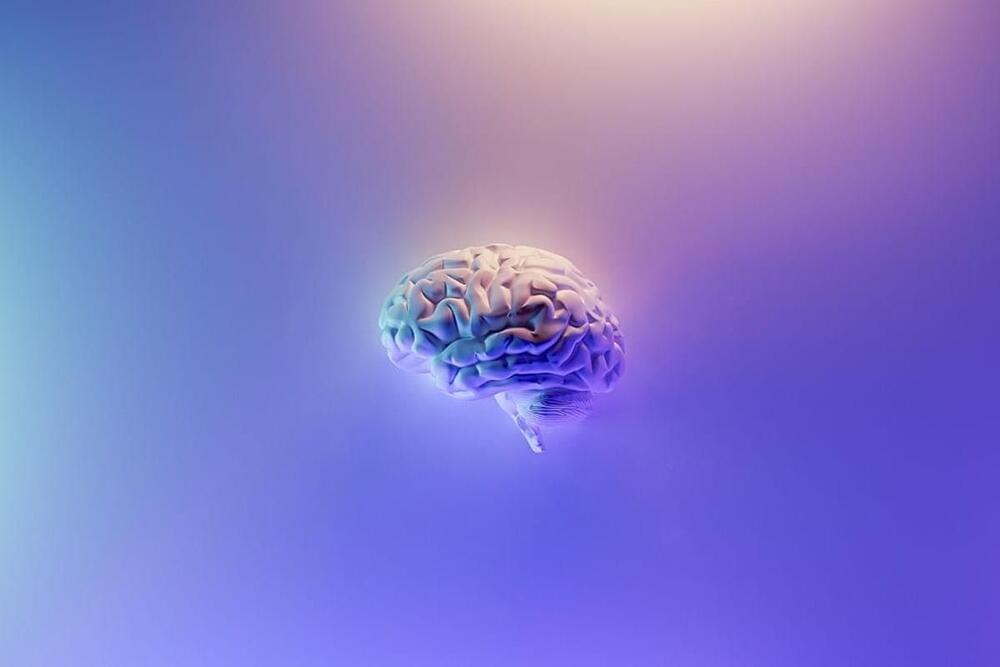Page 5016
Mar 31, 2022
Scientists Achieve Record Energy Efficiency for Thin Solar Panels
Posted by Shubham Ghosh Roy in categories: chemistry, solar power, sustainability
Scientists from the University of Surrey and Imperial College London have achieved an increase in energy absorption in ultra-thin solar panels by 25%, a record for panels of this size.
The team, which collaborated with AMOLF in Amsterdam, used solar panels just one micrometer thick with a disordered honeycomb layer on top of the silicon panel. The biophilic design draws inspiration from butterfly wings and bird eyes to absorb sunlight from every possible angle, making the panels more efficient.
The research led to a 25% increase in levels of energy absorption by the panels, making these solar panels more efficient than other one-micrometer-thick panels. They published their findings in the American Chemical Society’s journal, Photonics.
Mar 31, 2022
Scientists witnessed the star’s mysterious death emitting six rings
Posted by Shubham Ghosh Roy in category: evolution
Mar 31, 2022
Plasmonic catalyst smashes record for reducing vital chemical feedstock
Posted by Shubham Ghosh Roy in category: chemistry
Chalcogenide catalyses reduction of nitroaromatics used in everything from paints, plastics and pharmaceuticals.
Mar 31, 2022
The Promise of Analog AI
Posted by Jose Ruben Rodriguez Fuentes in categories: futurism, robotics/AI
Neural networks keep getting larger and more energy-intensive. As a result, the future of AI depends on making AI run more efficiently and on smaller devices.
That’s why it’s alarming that progress is slowing on making AI more efficient.
The most resource-intensive aspect of AI is data transfer. Transferring data often takes more time and power than actually computing with it. To tackle this, popular approaches today include reducing the distance that data needs to travel and the data size. There is a limit to how small we can make chips, so minimizing distance can only do so much. Similarly, reducing data precision works to a point but then starts to hurt performance.
Mar 31, 2022
Physicists: We Are On The Verge Of Discovering Fifth Dimension And It Will Change Everything We Know About Physics
Posted by Liliana Alfair in categories: physics, space
What a time to be alive… We are on the verge of discovering the fifth dimension and it will change everything we know about the Universe.
Scientists are sometimes questioned if they conduct fresh experiments in the lab or continue to repeat previous ones for which they have certain outcomes. While most scientists undertake the former, scientific advancement also relies on conducting the latter and validating whether what we think we know remains true in light of fresh knowledge.
Mar 31, 2022
Expert Says Humans Could Live Longer
Posted by Nicholi Avery in categories: internet, robotics/AI
𝐄𝐱𝐩𝐞𝐫𝐭 𝐒𝐚𝐲𝐬 𝐇𝐮𝐦𝐚𝐧𝐬 𝐂𝐨𝐮𝐥𝐝 𝐋𝐢𝐯𝐞 𝐋𝐨𝐧𝐠𝐞𝐫 𝐛𝐲 𝐔𝐩𝐥𝐨𝐚𝐝𝐢𝐧𝐠
Experts believe that with new AI and metaverse technologies, humans could upload to their brain to the web and potentially live longer.
Mar 31, 2022
Towards The Cybernetic Theory of Mind
Posted by Alex Vikoulov in categories: cosmology, education, information science, quantum physics, robotics/AI

Local consciousness, or our phenomenal mind, is emergent, whereas non-local consciousness, or universal mind, is immanent. Material worlds come and go, but fundamental consciousness is ever-present, according to the Cybernetic Theory of Mind. From a new science of consciousness to simulation metaphysics, from evolutionary cybernetics to computational physics, from physics of time and information to quantum cosmology, this novel explanatory theory for a deeper understanding of reality is combined into one elegant theory of everything.
#CyberneticTheoryofMind #Consciousness #Evolution #Mind #Documentary
Mar 31, 2022
Creating a Tendon-Driven Robot That Teaches Itself to Walk with Reinforcement Learning
Posted by Shubham Ghosh Roy in categories: information science, robotics/AI

Why do industrial robots require teams of engineers and thousands of lines of code to perform even the most basic, repetitive tasks while giraffes, horses, and many other animals can walk within minutes of their birth?
My colleagues and I at the USC Brain-Body Dynamics Lab began to address this question by creating a robotic limb that learned to move, with no prior knowledge of its own structure or environment [1,2]. Within minutes, G2P, our reinforcement learning algorithm implemented in MATLAB®, learned how to move the limb to propel a treadmill (Figure 1).
Mar 31, 2022
Researchers’ novel tool to help develop safer pesticides
Posted by Shubham Ghosh Roy in categories: biotech/medical, chemistry, computing, economics, ethics, health
The majority of commercial chemicals that enter the market in the United States every year have insufficient health and safety data. For pesticides, the U.S. Environmental Protection Agency uses a variety of techniques to fill data gaps in order to evaluate chemical hazard, exposure and risk. Nonetheless, public concern over the potential threat that these chemicals pose has grown in recent years, along with the realization that traditional animal-testing methods are not pragmatic by means of speed, economics or ethics. Now, researchers at the George Washington University have developed a new computational approach to rapidly screen pesticides for safety, performance and how long they will endure in the environment. Moreover, and most importantly, the new approach will aid in the design of next-generation molecules to develop safer pesticides.
“In many ways, our tool mimics computational drug discovery, in which vast libraries of chemical compounds are screened for their efficacy and then tweaked to make them even more potent against specific therapeutic targets,” Jakub Kostal, an assistant professor of chemistry at GW and principal investigator on the project, said. “Similarly, we use our systems-based approach to modify pesticides to make them less toxic and more degradable, while, at the same time, making sure they retain good performance. It’s a powerful tool for both industry and regulatory agencies that can help design new, safer analogs of existing commercial agrochemicals, and so protect human life, the environment and industry’s bottom line.”
Using their model, the team analyzed 700 pesticides from the EPA’s pesticide registry. The model considered a pesticide’s likely persistence or degradation in the environment over time, its safety, and how well it performed at killing, repelling or controlling the target problem.
















